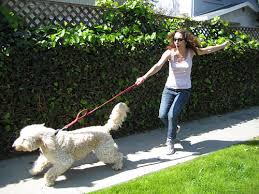If you want to add a new member to your family and you’re searching for a dog that has a great temperament, is loving, energetic and the perfect companion, then the Labrador can be the perfect family pet. This breed is considered one of the easiest dogs to train because they’re fiercely loyal to their owners, highly intelligent and friendly.
Easiest Dogs to Train: Loveable Labs and Important Breed Characteristics
The fact that these dogs are very loyal, intelligent, fast learners and are eager to please their owners is what makes this breed a great choice for the family dog or a working dog. This breed features a gentle temperament and they’re very tolerant of small children. These dogs are active and have a strong hunting instinct. They also thrive with obedience training and are considered wonderful swimmers. These dogs are eager to learn and can get along well with any breed. Their overall sweet nature and intelligence are also what makes them the perfect choice for therapy or service dogs.

Labs need to burn off any excess energy especially during the first couple of years. Daily walks or backyard playtime is a must, for a happy thriving dog. Swimming is also a great way to burn energy for this breed, especially because it’s one of their favorite pastimes. If you’re unable to exercise your lab daily, they may pack on the pounds pretty quickly. Obesity in labs is one of the major health concerns for this breed.
Playing fetch is a great way to burn a lot of energy and also teaches your dog how to retrieve. Labs are born to hunt and retrieve. Begin by throwing a ball around the backyard or even the park for a period of twenty minutes or until you notice that your pet is starting to tire. As your dog grows and their energy increases you can slowly lengthen play time.
Behavioral Problems in Labs
Most labs will have no problem learn basic commands, but they’re notorious for jumping up on people, especially new people and many lab owners have a hard time correcting this behavior. If your pup is jumping up on family members and visitors, it’s your job to nip it in the bud immediately, especially if you have small children. If guests are coming over, place a leash on your dog and hold onto them when your guests walk in the door, only letting your dog off their leash once they have settled down. If they jump on you or other members of the family then it’s important that you and other family members consistently tell them down and ignore the animal until they have settled down.
Separation anxiety is another behavioral issue that’s common in labs. This can be dealt with easily enough, by slowly lengthening the time you’re away from home. Start by leaving for five to ten minutes and return home. Increase this amount of time by ten minutes each time. This teaches your dog that you’ll always come back. Separation anxiety can be a major issue if your dog is destructive in your absence. Until your dog is over this issue it’s recommended that you crate your pet while you’re out in order to avoid destructive behavior such as digging or destroying property or items in the home.

